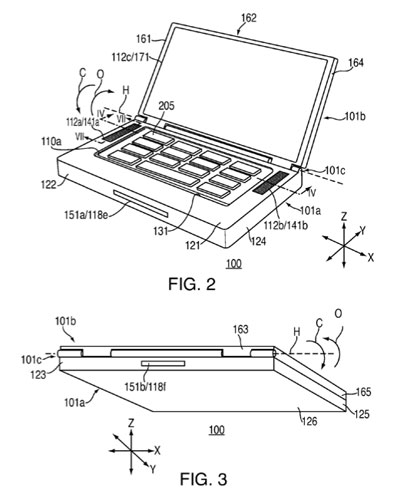 Apple files 100s of patents each year, but most of them never appear in the consumer devices. But 4 recent patents are relate closely to macbook cooling technology which could appear in the devices sometime soon.
Apple files 100s of patents each year, but most of them never appear in the consumer devices. But 4 recent patents are relate closely to macbook cooling technology which could appear in the devices sometime soon.
The new patents, over the last week, deal with cooling and heat control in laptops.
Heat dissipation has always been a big challenge for both chip and Laptop/notebook manufacturers.
Out of the 4, the most important patent application describes a “solid state cooling system” that uses – instead of fans or conductive materials – thermoelectric cooling through the so-called “Peltier effect.” Named for French physicist Jean Charles Athanase Peltier, this effect describes the cooling or heating that happens when current is forced through a junction of two different metals. When current flows in one direction, it can cool the metal by as much as 5° C.

According to AppleInsider, One of the invention involves the use of air flow meters and thermal sensors placed in open areas of a laptop’s case to detect the speed and temperature of the air inside the chassis. If air flow slows, like when a particular vent is blocked by external object, the system could take that into consideration, either increasing the speed at which the fans spin or by reducing the performance of the processor so that it generates less heat. Even Intel chips have the capability of doing the latter, also known as passive cooling.
In addition, one of the patents talk about using ports such as USB, FireWire and Ethernet, as secondary vents to bring cooler air into the housing and for dissipating heat through connectors. In order to achieve this, the notebook case would be designed so that the location of the ports improves airflow in parts of the chassis where heat builds up. However, the vents would make use of a “hydrophobic material” to block liquids, but not air, from entering the case.
The last one talks of using heat-conductive assemblies to cool components inside the case of a laptop by dissipating the heat to the laptop’s hinge which are connected by a wrapped heat pipe to a graphite “heat spreader”. another purpose of the heat spreader is to dissipate as much heat as possible so that casing doesn’t heat up.
All in all, these 4 innovations when combined together can build the first Fanless, coolant-less, Notebook. And the same battery would be able to to give 15-20% more life.
We write about Latest in tech: Apple, Innovation, Android, iPhone, Tablets, Gadgets, Open Source, Programming. Grab them @taranfx or below:
loading...
loading...

LOL, I wish. I bought one for my SOn for Christmas last year. $1200
Jess
loading...
loading...
thanks, it’s really helpful
loading...
loading...